By Margaret Mcguinness
Obama’s BAM Project Becomes BRAIN Initiative
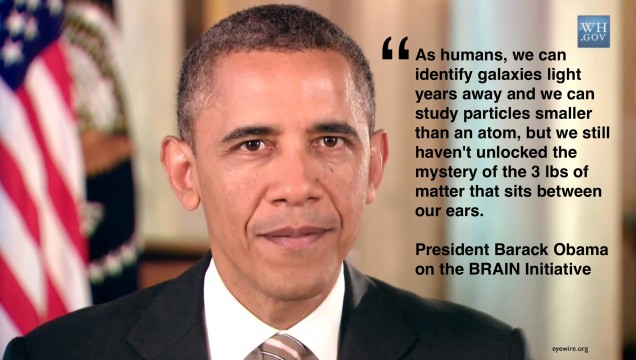 At his State of the Union address nearly two months ago, President Obama announced plans for the Brain Activity Map (BAM) project (see The Nerve blog Part 1 and Part 2), a billion-dollar ten-year research initiative to gain a better understanding of the brain and to provide deeper insights into diseases like Alzheimer Disease, Parkinson Disease, and Autism Spectrum Disorder.
At his State of the Union address nearly two months ago, President Obama announced plans for the Brain Activity Map (BAM) project (see The Nerve blog Part 1 and Part 2), a billion-dollar ten-year research initiative to gain a better understanding of the brain and to provide deeper insights into diseases like Alzheimer Disease, Parkinson Disease, and Autism Spectrum Disorder.
On Tuesday, April 2nd, the President announced that he plans to include the BAM project – now termed the BRAIN (Brain Research through Advancing Innovative Neurotechnologies) Initiative – in his 2014 budget proposal. The director of the NIH, Dr. Francis Collins, notes that one of the major goals of the project is to simultaneously sample from many neurons in real-time. Although existing technology can measure the activities of single neurons and of brain regions, it cannot measure those of circuits. Because existing technology has not yet advanced to a level that allows such complex analysis, the BRAIN initiative will be initially funded $100 million for the year of 2014 to develop and advance neuroscience technologies. Yearly negotiations will take place to determine future funding.
Thank you, President O-BAM-A! Yours truly, the Neuroscience Community
Whether you’ve read an article, listened to the radio, watched the news, or heard from a friend, I'm sure you already know that President Obama and his administration have been planning to enrich our future as mind and brain enthusiasts. However, if you have been under a rock, studying for midterms, or working (way too much), you may be asking – how? Well, do you know the whole Human Genome Project thing? How it revolutionized genetics? Just like geneticists who were able to map the complete human genome by 2003, neuroscientists will be given the goal of more fully understanding the human brain by building a map of its activity.
“No Brain? No Problem!”
…Says the slime mold before the zombie ate its brain centuries ago, forcing the whole species to adapt into its present state: brainless yet smart.

Slime molds avoid bright light. In A, there was none, so molds grew to food (yellow puncta) freely while in B and C there were differing shades of light to influence its growth, which is surprisingly comparable to the real Tokyo rail network in D. E and F show minimum spanning trees (see third source below).
Okay, the zombie part isn’t entirely accurate, BUT, these slime molds (the gelatinous amoebae also known as the protist, Physarum polycephalum) do seem to have no problem functioning without a brain. They can navigate complex mazes for food, choose healthy over less nutritious food, and determine the shortest route between points of interest – a feat that takes humans years when designing complex transportation systems. How could this be? More
New Directions: Linking Mental Illness with Microbiota
The gastrointestinal (GI) tract in humans provides a home for many (1014) bacterial organisms. The colonization of the GI by bacteria, or microbiota,  starts at birth and continues throughout early development and life. These microbiota affect many bodily functions, aiding metabolism, modulating inflammation, and defending against harmful micro-organisms. Each person has a unique profile of microbiota, which is influenced by genetics and the environment. Healthy people, however, generally have similar numbers and distributions of microbiota. Interestingly, disorders of the GI tract have a high comorbidity with mental illness.
starts at birth and continues throughout early development and life. These microbiota affect many bodily functions, aiding metabolism, modulating inflammation, and defending against harmful micro-organisms. Each person has a unique profile of microbiota, which is influenced by genetics and the environment. Healthy people, however, generally have similar numbers and distributions of microbiota. Interestingly, disorders of the GI tract have a high comorbidity with mental illness.
It is not surprising then that research in this field has grown, with labs hoping to gain a better understanding of the ‘gut-brain-axis.’ If these labs can elucidate the effect of microbes in the GI tract on the central nervous system, they could shed light on why more than half of patients with irritable bowel syndrome meet the criteria for mood disorders, or how GI tract disorders and mental illnesses can be more effectively treated.
Many researchers are currently focusing on how variations in the composition of microbiota impact physiology and contribute to disease, such as obesity and inflammation. Increasingly, studies have been revealing that these microbiota communicate with the brain and influence its function and behavior, potentially by neural, endocrine, and immune pathways.
Lolo, Ubongo, Cerebro, Cervello, Cerveau, Brein = BRAIN!
Know any of the above words from ubongo to brein? If so, you can (surprisingly to you of course) say BRAIN in Hawaiian, Swahili, Spanish, Italian, French, or Dutch. And if you can (read this and) fluently speak at least one of these languages, or another not shown, you are multilingual (again, SO surprisingly to you…) – and may consequently reap some benefits from this status! More
You Can't Always Get What You Want
According to a recent study, there are at least two neural correlates for decision-making in the brain.
If you're the scarecrow in the Wizard of Oz who yearns for a brain, you have neither of these correlates. However, if you are someone who has frontal lobe damage to the orbitofrontal cortex (OFC), you have one functional neural correlate: for action value comparisons. You can make optimal decisions about how to get a brain (...although you obviously would already have one). Alternatively, you could have suffered damage to the dorsal anterior cingulate cortex (dACC) - in which case you would be able to make stimulus value comparisons and choose which objects are optimal, such as the wittiest or the most creative brain, but not how to get the chosen object. More
Neurotransmission: Now, Soon, L.A.T.E.R., or Never?
Lobsters, Axons, Telephones, and Extracellular Recordings – A look at how neuronal signals can be transmitted differently under certain pharmacological conditions.
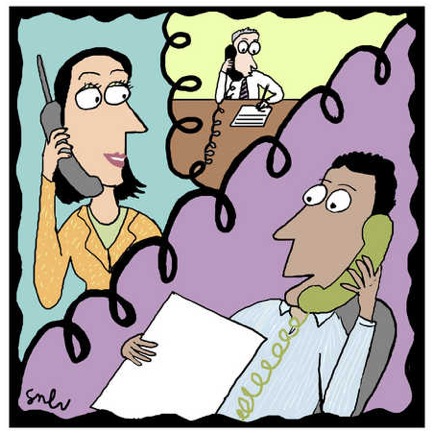
Neuronal signals are normally transmitted from cell bodies, or somas, to terminals via extensions called axons. At these terminals, connections called synapses are made with other neurons whereby the signals are released via the aide of chemical messengers called neurotransmitters. Many still believe that axons are reliable conductors of these signals.
However, with several years’ worth of experiments, scientists have questioned the fidelity of axonal conduction. They’ve realized that axons do not work like telephones. While telephones and axons may both have buttons – at the terminals in axons – only telephones faithfully conduct signals. And only telephones ring aloud and send messages to voicemail…
In any case, neuronal signals, unlike telephone signals, can change along their paths. Moreover, the pre-synaptic neuron may communicate a different message from the one originally sent from the soma to the synapse with the post-synaptic cell. Researchers at the lab I’ve been working at this summer, the Whitney Laboratory for Marine Bioscience, have focused on the role of neuromodulation in signal transmission along axons, particularly by the well-known neurotransmitter – dopamine. More
A Peek at Parkinson’s: What’s New for the Old?
With the Pancakes for Parkinson’s event at Boston University nearing, on April 2nd, I thought it would be a good time to check up on the latest in Parkinson’s research.
Firstly, Parkinson’s Disease (PD) is a motor disorder that affects dopaminergic neurons of the brain, which are necessary in the coordination of movement. Onset is usually around age 60, starting with symptoms including tremor, stiffness, slowness of movement, and poor balance and coordination. While current treatments can help alleviate the symptoms in patients, none provide a cure.
Second off, the mission of the Michael J. Fox Foundation for Parkinson’s Research and other support groups is to find better treatments for those suffering from the disease. With the Baby Boomer generation entering late adulthood and old age, more research needs to be done to better understand the disease and help those with it find relief. Consider stopping by the GSU Alley for some pancakes to show your support for the Foundation and its cause next month!
Ranging from studying food intake to using technology, many approaches have been used in PD research. More
Zombies, brains, and media, oh my!
Zombies attack! – well, the media, anyway. From movies and television shows (this past Sunday on Glee!) to books and conventions, zombies are taking over. 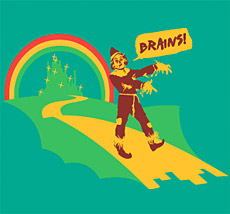 Last year, “Seattle, the self-proclaimed zombie capital of the world, was host to ZomBcon, the first ever Zombie Culture Convention, over Halloween weekend at the Seattle Center Exhibition Hall.
Last year, “Seattle, the self-proclaimed zombie capital of the world, was host to ZomBcon, the first ever Zombie Culture Convention, over Halloween weekend at the Seattle Center Exhibition Hall.
A “symbolic tribute” to zombie film director, George A. Romero, the event allowed fans to gather over three days to “celebrate all things zombie.” The creator, Ryan Reiter, also organized a Red, White & Dead Zombie Walk for Independence Day (Guinness Book World Record for “largest gathering of zombies” with 4200... New BU Initiative: Beat this Guinness Book World Record?)
Back to zombies though – on April 13th, 2009, Dr. Steven Schlozman , a Harvard psychiatrist, went to the Coolidge Corner Theater (close by in Brookline!) to discuss and answer questions about the neurobiology of zombies before a screening of Night of the Living Dead.
Having studied zombie films and literature as well as consulting with the director Romero noted above, Dr. Scholzman is quite informed in zombie-ology. Amazingly, the enthusiastic response from th e moviegoers inspired him to go viral and, according to Rebecca Jacobson on PBS, “take the lecture nationwide.”
e moviegoers inspired him to go viral and, according to Rebecca Jacobson on PBS, “take the lecture nationwide.”
Ira Flatow of National Public Radio had an interview with him in October 2009, in which of Dr. Scholzman, he says his fake research aids attempts to “see if there could be…a vaccine to protect us from … zombies, just in case.” Later, when asked by a caller about the different kinds of zombies portrayed in movies, he distinguished between the typical, slow Romero-type of zombie and the fast, more sophisticated “28 Days later” type that can exhibit hunting and other pack behaviors – “neurobiologically speaking, they got to be different.” 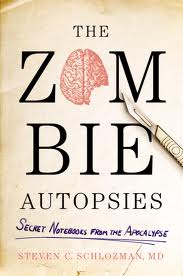
He has actually also written a popular science book, The Zombie Autopsies: Secret Notebooks from the Apocalypse. With 208 pages of zombie-brain-apocalyptic fun, his book will be released March 25th, 2011 for as little as $11.25 on Amazon. (Check out his zombieautopsies twitter for more on the book and his theories!)
Rebecca Jacobson notes that Dr. Scholzman is using a very straightforward, fun, teaching approach to help his students apply neuroscience to new situations. Dr. Scholzman believes adults “learn better when they can apply new knowledge to something familiar, before going on to tackle more complex neuropsychiatric cases.”
Teaching science in new ways is very valuable to Doron Weber of the Sloan Foundation, which has “has promoted filmmakers writing screenplays and making movies with science themes.” He says, "science and technology are woven into the fabric of our lives, but people all too often see it as something exotic or unusual. What we are doing here is bringing the real person, a scientist, so people can see that science is a very human activity."
The Coolidge Corner Theater tries to bring science to the public by holding Science on Screen events, tickets only $7.75 for students. This February 21st, the film Death in Venice will be screened following a discussion with Nancy Etcoff, who is a psychologist on the faculty at Harvard Medical School. She wrote Survival of the Prettiest: The Science of Beauty. Just a month later, on March 21st, Transcendent Man will be screened and discussed with both Ray Kurzweil, “one of the world’s leading futurists,” and director Barry Ptolemy. Go to http://www.coolidge.org/science for more information!
Back to brains though! In Dr. Scholzman’s fictional, futuristic papers on the neurobiology of zombies, he writes that zombies suffer from ANSDS (Ataxic Neurodegenerative Satiety Deficiency Syndrome). He strives to explain the hunger, rage, movement, and so forth of zombies. Interestingly, he says that zombies can only be fueled by rage, like crocodiles, and hence, have highly active amygdalae. Because of this, he originally named their syndrome RAH (Reptilian Aggression Hunger Syndrome), but that was before the fictional International  Classification of Disease decided to change it to ANSDS in “2012”… find out more, including his theory on how zombies always eat but never..you know excrete, here!
Classification of Disease decided to change it to ANSDS in “2012”… find out more, including his theory on how zombies always eat but never..you know excrete, here!
While Dr. Scholzman is not the only person to try to explain the neuroscience of zombies, he does it very well and has been received enthusiastically by many. Interestingly though, the new hit TV series, The 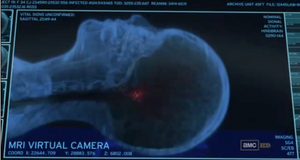 Walking Dead, attempts describing what happens to the brain after infection and into resurrection. Watch this Youtube clip to see Dr. Edwin Jenner use MRI virtual camera to show the other characters what he has learned of zombies! How does his explanation line up with Dr. Scholzman’s? What’s your theory?
Walking Dead, attempts describing what happens to the brain after infection and into resurrection. Watch this Youtube clip to see Dr. Edwin Jenner use MRI virtual camera to show the other characters what he has learned of zombies! How does his explanation line up with Dr. Scholzman’s? What’s your theory?
Sources:
A Head-Shrinker Studies The Zombie Brain – Ira Flatow, National Public Radio
ZomBcon 2010: Seattle Hosts First Ever Zombie Convention – Timothy Lemke, Yahoo! Games, Plugged in
A Harvard Psychiatrist Explains Zombie Neurobiology – Mark Strauss, io9 forum
What Zombies Can Teach Us About Brains – Rebecca Jacobson, PBS
Silver Screen Scientists Unleashed – Dan Vergano, USA Today
Creamy Corn or Two-Dollar Cookies? The Rise of Behavioral Economics
Imagine that you’ve just spent the whole morning working non-stop. You’ve been hushing your stomach  grumblings for the past hour and you cannot concentrate on anything but your hunger and that devastatingly slow-ticking clock.
grumblings for the past hour and you cannot concentrate on anything but your hunger and that devastatingly slow-ticking clock.
Another hour passes and that long awaited lunchtime break has finally come around. All you know is that you need food, and you need it now, so you decide to stay in your building and rush to the cafeteria. You enter, put your things down, and begin the search.
Which foods will you choose? Or, which foods will choose you?
Brian Wansink and David R. Just are trying to answer that question, specifically pertaining to children. In addition to being faculty at the Dyson School of Applied Economics and Management at Cornell, Wansink and Just are co-directors of the newly launched Cornell Center for Behavioral Economics in Child Nutrition Programs. With a $1 million grant from the U.S. Department of Agriculture, the center will provide valuable research on subtle behavioral influences, helping efforts to “nudge" children into making healthier eating choices.
Wansink says, "We're taking some of the best researchers in the nation and pairing them with schools to figure out new, cool ways to get people to eat healthier.” For example, "by strategically placing healthy food at both the beginning and end of school lunch lines, more children choose them.”
Naming foods more descriptively, charging extra for dessert, and placing healthy foods like fruits into baskets  also increased choice of healthier foods. Other interesting techniques Wansink and Just suggest can be seen in Joe McKendry’s illustration in The New York Times.
also increased choice of healthier foods. Other interesting techniques Wansink and Just suggest can be seen in Joe McKendry’s illustration in The New York Times.
The benefits of this research seem clear enough. Children who are encouraged to eat healthier each day at school will likely develop long-lasting, healthy habits. These habits can then help reduce their risk of obesity and associated diseases.
So what about the drawbacks? Are there any? Is changing the way options are presented a violation of free will or choice? Just says he and his colleagues are “not eliminating choice... [they’re] pushing things where [they] can and not trying to do the impossible."
What do you think? Are there degrees of choice? Are Just and Wansink simply lowering the degree children have in selecting foods to eat? Either way, isn’t it sort of disturbing that such subtle changes in placement, naming, or presentation can influence your decisions, whether it be which foods you eat or which habits you’ll develop?
The research in the rising field of behavioral economics certainly leads one to ask these questions. Author of Predictably Irrational, Dan Ariely talks on TED about how irrational people are in their decisions. Particularly, he discusses how easily external forces can influence choices. For example, depending on how a question is worded or presented, people respond differently even though the two forms of the question are essentially the same.
One interesting study he conducted involves choosing the image of the most attractive man out of a total of three 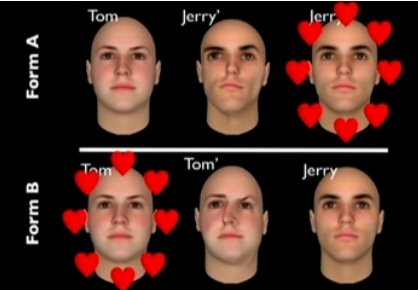 men. Two of these images are of the same man, Jerry, but one is edited to make him less attractive by distorting the facial features. The other image is of another man, Tom. Most participants chose the more attractive version of Jerry. However, if instead there are two images of Tom, one less attractive, and one image of Jerry, most people choose the more attractive version of Tom. Even though the original images of Tom and Jerry remained in both sets, they did not receive the same response because of an external force.
men. Two of these images are of the same man, Jerry, but one is edited to make him less attractive by distorting the facial features. The other image is of another man, Tom. Most participants chose the more attractive version of Jerry. However, if instead there are two images of Tom, one less attractive, and one image of Jerry, most people choose the more attractive version of Tom. Even though the original images of Tom and Jerry remained in both sets, they did not receive the same response because of an external force.
Through these examples, Ariely demonstrates how much influence the designer, whether of surveys, forms, or tests, has on the decisions of the people filling them out. Do the people still have a choice to choose Jerry when unattractive Tom highlights regular Tom so well? If yes, then why do most people choose Tom? Are there degrees of choice involved? How about degrees of resistance to external forces? Do they change at all when the  designers have different intentions? For example, compare a store selling 2 shirts for the price of one and a cafeteria offering “creamy corn” and “two-dollar cookies.” Both places are trying to take advantage of subtle differences, but the cafeteria seems to have kinder intentions.
designers have different intentions? For example, compare a store selling 2 shirts for the price of one and a cafeteria offering “creamy corn” and “two-dollar cookies.” Both places are trying to take advantage of subtle differences, but the cafeteria seems to have kinder intentions.
What can we make of all this? Can we change how irrational, as Ariely might say, we are? If so, should we advocate the advances of behavioral economics in their kinder intentions, despite the seeming drawbacks?
Sources/Additional Readings:
Stealth Health for Kids – Newsweek
Lunch Line Redesign – The New York Times
New center, with $1 million grant, aims to make school lunchrooms smarter – ChronicleOnline, Cornell University
Daniel Kahneman: The Riddle of Experience vs. Memory – TED Talks
Dan Ariely: On Our Buggy Moral Code – TED Talks


